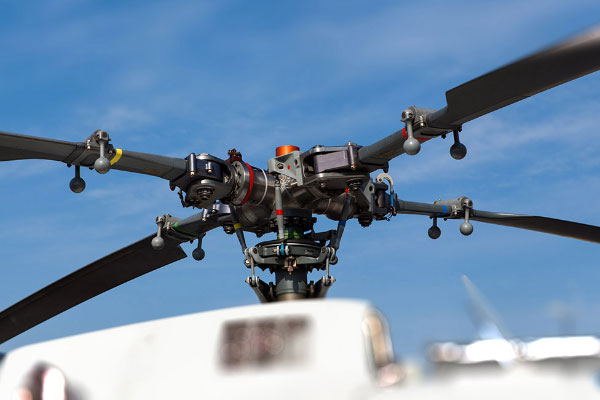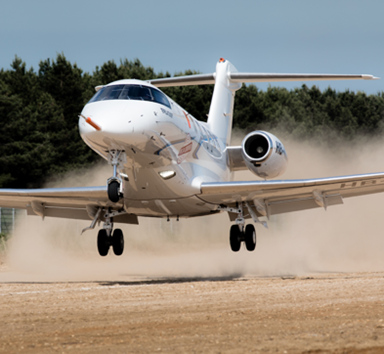
Flight Test Instrumentierung (FTI)
Maximale Flexibilität bei der Messung und Analyse von Luftfahrzeugparametern
In der Welt der Luftfahrt ist die Flugtestinstrumentierung (FTI) das Herzstück zur Erfassung von Messdaten und Parametern, die für die Zertifizierung durch die Luftfahrtbehörden erforderlich sind. Verschiedene Technologien und Werkzeuge werden eingesetzt, um Daten während der Flugerprobung zu sammeln, zu entschlüsseln und zu interpretieren. Die daraus gewonnenen Erkenntnisse geben einen detaillierten Überblick über die Leistung und Dynamik eines Flugzeugs.
Der Bereich 'Flight Test Instrumentation' eines Flugzeugherstellers setzt dabei Datenerfassungssysteme (kurz: DAS oder DAQ) ein, deren Aufgabe die Aufzeichnung von analogen Sensordaten ist. Solche Systeme erfassen einige hundert bis tausend Messkanäle, die gebräuchlichsten Sensoren sind dabei Dehnmesstreifen und Sensoren für die Messung von Temperatur oder Vibration. Darüberhinaus kommen Kraft-, Druck, Weg-, Winkel- und Durchflusssensoren zum Einsatz. Neben dem Erfassen der analogen Signale müssen auch zeitsynchron die digitalen Daten des Avionik Systems erfasst werden. Dafür müssen digitale Schnittstellen wie ARINC oder MIL-Bus vom DAQ System eingelesen und dekodiert werden können.
Telemetrieverbindungen fungiert als Vermittler in der Luft- und Raumfahrt und ermöglicht die Kommunikation in Echtzeit und den nahtlosen Informationsaustausch zwischen dem Flugzeug und dem Bodenbetrieb. Dies erleichtert die Überprüfung und Replikation von Flugmanövern und erhöht die Flexibilität und Anpassungsfähigkeit des Testprozesses.
Die Messdaten können im Flugtest-Messsystem oder auf der Workstation des Flugtestingenieurs gespeichert oder über den Telemetrie-Standard IRIG 106 direkt an eine Bodenstation übertragen werden. Die Bodenausrüstung für die Luft- und Raumfahrt umfasst eine Empfangsantenne für Telemetriesignale, ein System zur Dekodierung von PCM-Datenströmen und die Möglichkeit, verschiedene Messdaten an separate Arbeitsstationen weiterzuleiten. Diese Integration verbessert die Kommunikation und Überwachung und verbessert den Flugtestprozess.

Strukturuntersuchungen von Komponenten, wie beispielsweise von Airframes, Flügeln, Rotorblättern, Fahrwerk, Aktuatoren, Motoren. Dehnungs- und Belastungsprüfungen und -kontrolle Kalibrierungen, statische Tests, Ermüdungs- und Lebensdauertests. Dehnungsmessungen an Verbundwerkstoffen, Instrumentierung für Turbinenantriebstests. Integrierte automatische Prüfstandssteuerung und und Alarmsysteme.

Hardware-in-the-Loop (HiL)-Lösungen für Bugradsteuerung, Iron Bird und ISTR-Rigs. Entwicklungstests von Frachtladesystemen. Integrierte ATP-Prüfstände für Produktion und Qualitätskontrolle. Entwicklungsprüfstand für Hochauftriebssysteme. Druck- und Temperatur-Scanner-Schnittstellen für Turbinentriebwerk-Tests. Hardware und Software für die Schall- und Schwingungsanalyse.
Teidän hyötynne - meidän tavoitteemme
- Myymme kokonaisia ratkaisuja, emme pelkkiä tuotteita
- One-stop shop tehokkaille mittausratkaisuille - kattaen koko testausketjun
- Analogiatulot suodatettuja
- Hajautettu mittauslaite - tehokas, joustava ja luotettava
- TEDS-toiminnallisuus anturien asetuksille
- Yhdenaikainen monikanavainen näytteenotto
- Mittaustulokset nopeasti ja luotettavasti yhdistetyillä laite- ja ohjelmistoratkaisuilla
- Ohjelmoitavat laiteasetukset
- Kattava valikoima kenttäväyliä (mm. ARINC-429, ASCB-D, CAN, RS422)
- Mahdollisuus omiin laajennuksiin





